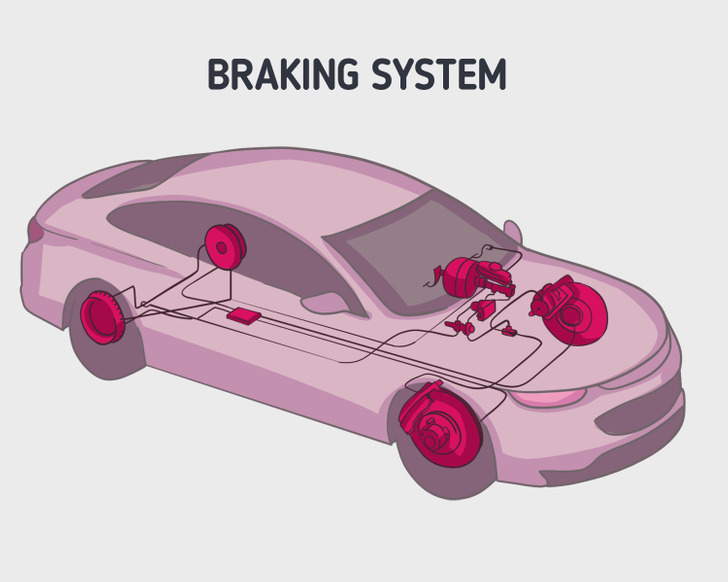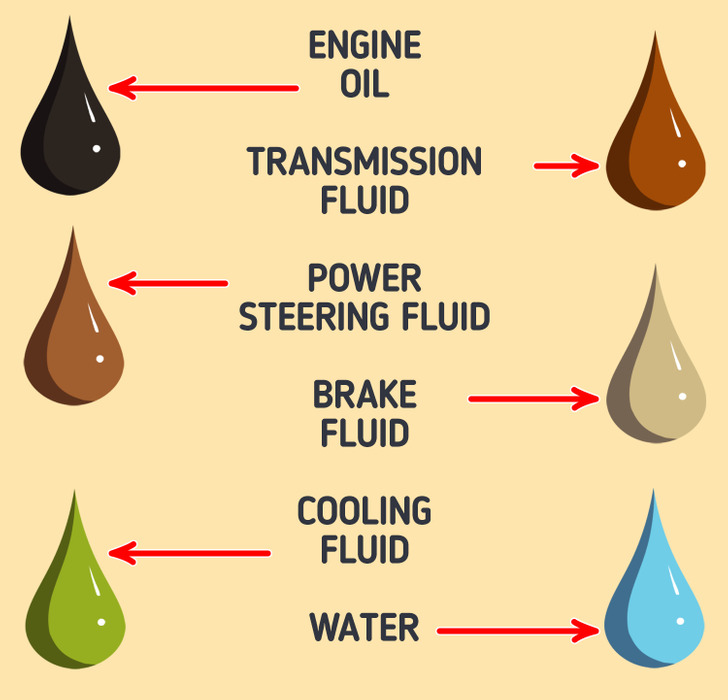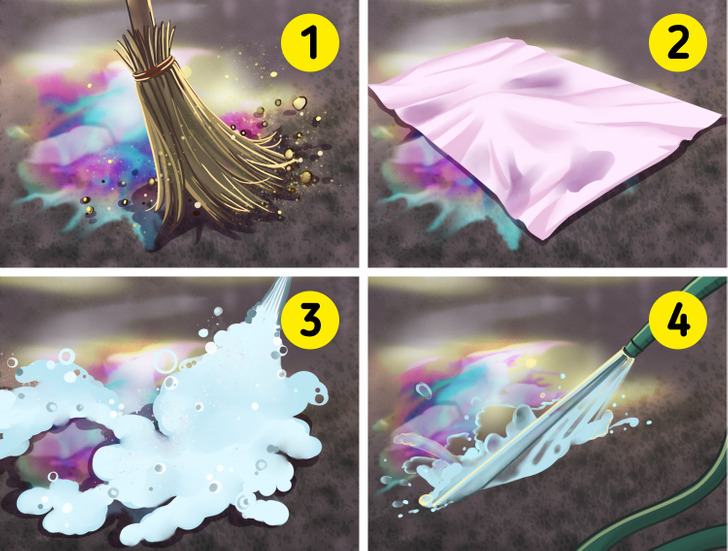What It Means if You See Spots Under Your Car
Finding spots under the car is definitely not a pleasant surprise. However, it will be useful for each car owner to know what the color of the liquid leaking from under the car means.
We at 5-Minute Crafts would like to tell you about what type of issues might be happening with your car, depending on the color of the stains under it. The bonus part will show you an effective way to get rid of them.
Why it happens

First of all, make sure the liquid is leaking from your vehicle. If there is a puddle under the car, and you parked on the street, then another car may have left the stain. To find out where the leaking is coming from, take a flashlight and look under the car. Check for the presence of an oily shine that will signal the issue. Then find out where the leak is coming from and what type of liquid is dripping. It’s easy to do this: place a piece of white carton or foil under the car and wait. Take a photo of the stains before they dry. Knowing where they are located, in relation to your vehicle’s chassis, can help you pinpoint the source of the leak. Take these photos with you when you go to get your car serviced. The broken integrity of the braking system can be one of the reasons for the leak. There are 3 main things to take into account:
- color
- consistency
- the location of stains (in the front or rear part of the car)

- Engine oil. These stains usually range from light brown to black in color. They can be caused by damaged engine gaskets or valve covers, or oil pan leakage. It’s quite easy to identify this oil. An older oil will likely look dark-brown or black and the stains will be located right under the place where the engine is. Engine oil can be dripping out of the engine while moving, especially if your car has a lot of miles on it. If you notice that oil is dripping from the engine block while your car is parked, don’t try to drive the vehicle because it may not have enough oil pressure to run properly.
- Transmission (differential) fluid. This lubricates the moving parts in your vehicle’s axles. It is dense and has a light brown color with a reddish tinge. It can drip from any part of the car. The transmission fluid sometimes looks like engine oil, however, manufacturers add a red colorant to it. It also has a specific strong smell. Transmission fluid leaks can come from the gearbox or lines that go to the heat exchanger. Regardless of where the transmission fluid leaks, it is important to quickly fix the potential problem.
- Power steering fluid. This fluid has a red or light brown color and it drips from the frontal part of the vehicle. Though it is costly to repair a damaged power steering pump, still, the problem needs to be removed immediately. It’s easy to mistake this fluid for transmission fluid, moreover, some cars use the same liquid for the power steering system and for transmission. Since it might be too hard to distinguish the liquids from each other, it’s important to find out where the stains are located. If they are located next to the frontal left part of the vehicle, it’s likely power steering fluid. Check the power steering reservoir and hoses to make sure you are not missing cracks, leaks, or low fluid levels.
- Cooling fluid (аnti-freeze) is a viscous, toxic liquid that can be yellow, green, or pink, which becomes darker when dry. It can have a sweet odor. There are several ways cooling fluid can leak but the most common cause of a leak is a crack in the coolant reservoir. Antifreeze is dangerous for animals and children, while its leaks can cause accidental overheating of the vehicle. The problem may be in a broken water pump or a leak inside the heater.
- Brake fluid. Modern vehicle brakes use hydraulics to stop the vehicle. As with any hydraulic system, the proper functioning of brakes requires the correct fluid level. Fresh brake fluid has a transparent yellow color but it can become brown with time. It’s one of the most dangerous types of leaks. If you see a puddle like this under your car, don’t drive the vehicle. Call a mechanic and tow the car to a repair shop immediately. The key characteristics that you should pay attention to are the “smoothness” of the fluid — brake fluid is very slippery. You can also check the brake fluid reservoir to make sure the level is above the required minimum level.
- Pure water. The working AC in your car causes the accumulation of condensation. The system collects water and then drains it through a small tube under the vehicle. Therefore, on hot days, you can often see drops or puddles of water under the car. There is usually nothing to worry about as the air conditioner is working properly. If the amount of water coming out of your vehicle seems abnormal, ask a mechanic to inspect the cooling system at your next scheduled service.
- Fuel. Regardless of what fuel your vehicle is running on, the fuel tank can end up having leaks. If fluid leaks near the back of the vehicle, it’s likely that the gas tank is leaking. If the fluid drips near the front part of the vehicle, perhaps the fuel pump is broken. It’s easy to identify this type of leak because the fluid will smell like fuel.
How to remove stains from asphalt

- Remove all the trash from the stain.
- Use a towel or a rag to absorb the excess liquid.
- Apply a liquid dishwashing detergent or special road cleaner to the stain.
- Clean it with a stiff-bristled brush.
- Wash off the dirt with a garden hose or use a pressure washer for dirtier areas.